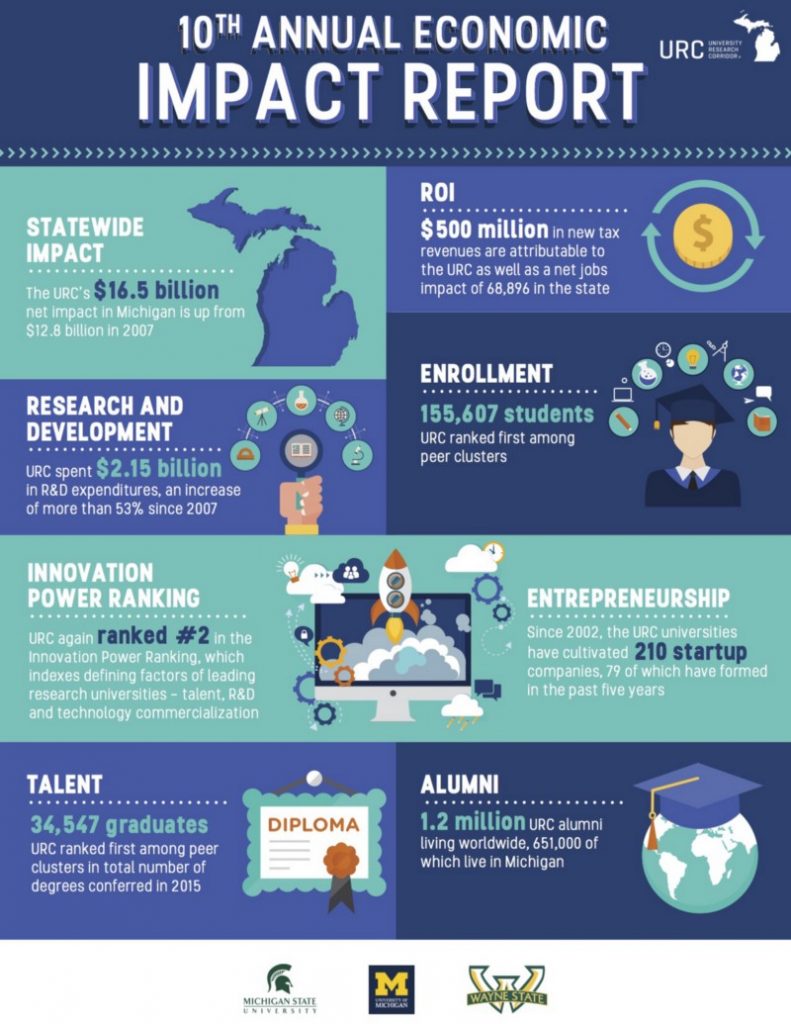By Bill Hart-Davidson on November 27, 2017 on Medium
I am grateful to my colleague Dr. Malea Powell for teaching me about the indigenous principle and practice of “seven generation stewardship.” The core idea is to care for the things and places that sustain us today so that they will continue to be resources for seven generations to come. Malea’s professional life is notable for her record of distinguished leadership including Chair of the Michigan State University’s Department of Writing, Rhetoric & American Cultures and Chair of the Conference on College Composition and Communication, to name just two. In each of these roles, she is guided by a seven generations approach to stewardship of the organizations she leads.
When I served in my first administrative role at MSU as Director of the Graduate Program in Rhetoric & Writing, I followed in Malea’s capable footsteps. I also inherited a set of leadership routines, habits, and practices — all carefully documented, since Malea is also an archival scholar! — that helped me to learn to be an effective institutional steward. I still draw on all of these things, and do so with more frequency and urgency now that I am an Associate Dean in MSU’s College of Arts & Letters Dean’s Office.
An example is the recent debate about tax reform in Washington, D.C., and especially the provisions in the U.S. House of Representatives legislation that would dramatically increase the taxable income of graduate students by adding to it the value of a non-cash benefit — their tuition remission credit — on top of their modest stipends. I prepared a response to this and other proposals that, in my view, pose a threat not only to students in the College but to our institution as a whole. I urged readers to contact their representatives to let them know that our public research universities are valuable, are worth investing in. Our students are worth it. As are generations of students to come.
By the Numbers: Public Research Universities Are Great Investments
When we look at dollars and cents, taking care of our public research institutions is an easy call. The data about the benefits of public research institutions is surprisingly clear. In Michigan, the three universities that make up the University Research Corridor — Wayne State University, Michigan State University, and the University of Michigan — accounted for billions of dollars worth of economic impact, hundreds of millions in tax revenues, and tens of thousands of jobs. Michigan is a top producer of talent among regional research clusters across the United States — ranking first or second across multiple categories for number of graduates with advanced degrees. These data are impressive and the news is all good. But…maybe not enough people know about it?
Public Funding for Universities Has Declined Dramatically
Despite the pride of alumni and sports fans, and the clear positive economic and social benefits that communities realize from public colleges and universities, public funding for these institutions is vanishing. In the time span of just one generation — roughly in my adult lifetime — we have, as a public, decided that the next seven generations may not have public research institutions like MSU, U of M, or Wayne State to attend.
In Michigan, we have seen a net decrease in public funding over the 10 years between 2006–2016. As of 2015, Michigan State University gets just a little over 10% of its funding from state appropriations.
There are any number of reasons why the decline of public support for universities is distressing. It undermines a key area of economic strength for the region we live in, for one thing. And while universities continue to deliver economic benefits for all citizens, more of the financial burden is borne by a smaller group of people, but especially students in the form of loan debt. Rather than ensuring their future success and the long-term viability of our research institutions, we are passing along long-term obligations and sowing uncertainty, even while the current generation reaps the benefits.
Leadership and Stewardship Go Hand in Hand
As a university leader, I take my job to protect and strengthen the institution as seriously as any other part of my scholarly work. We write about this work quite a bit here in the Dean’s office, but it is something for all faculty to consider. I encourage all of my colleagues to do so. We can, at times, succumb to cynicism when it comes to administrative work in particular. We cast roles like mine — Associate Dean — as buffoons or corporate stooges.
This is unfortunate. Because the scholarly work to keep our institutions strong is important. The work to make space for others to learn and study is important. The work to hold our institutions to the high ideals our culture values — equity, freedom, justice — is important. As we see with the declining trend of public support via state appropriations and as we saw with the recent tax proposal that would further erode graduate enrollment — when you increase taxes on something by a factor of 10 or more, you tend to get far less of that thing — our public research institutions need care or they may go away.
Along with inspiring colleagues like Malea Powell, I am proud to make stewardship a cornerstone of my scholarly work. The work I do to leave MSU better than I found it and not to simply extract from it the means to make my own livelihood is as important to me as any course I will teach or, any article or book I write.
Bill Hart-Davidson is Associate Dean for Research & Graduate Education in the College of Arts & Letters and Professor in the Department of Writing, Rhetoric, & American Cultures (WRAC) at Michigan State University.
Read more about institutions and decolonial practice from WRAC Department Chair and Professor Malea Powell:

